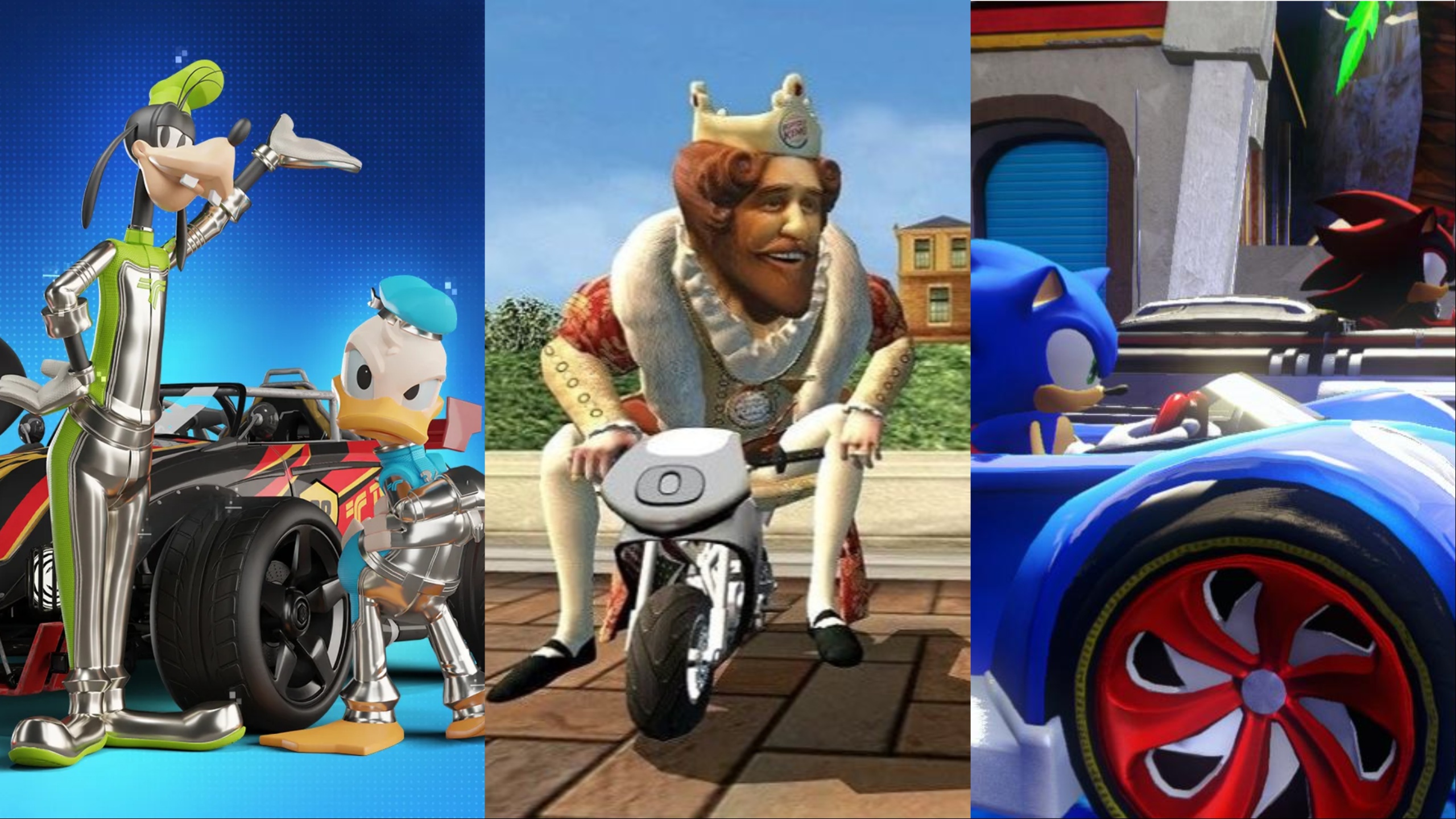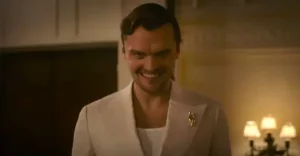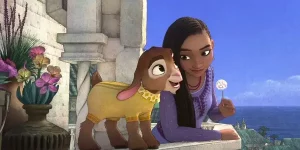
The release of Super Mario Kart on the SNES was a monumental moment in video game history not only because it launched one of the most popular franchises ever, but because it effectively birthed a new genre. Over the years, countless games have taken the Mario Kart formula and riffed on it with different characters and franchises, and while none of them have overtaken Mario as the king of karts, some have come pretty close, while others have crashed and burned.
Below we’ve compiled a selection of some of the best and worst kart games that have vied to catch up to Mario Kart in the ongoing race for genre supremacy. Some titles are more innovative than others, some are more polished and refined, and one is so trashy it literally became a meme…twice.
Sonic Drift (1994)
1994’s Sonic Drift is often credited for being the first Mario Kart clone. It’s a somewhat dubious distinction as well as a title that doesn’t necessarily convey the experience of actually playing the game. In many ways, Sonic Drift is closer to the Sega arcade racing games of all (like Hang-On). However, you can probably sooner attribute its old-school style to the limitations of the Game Gear hardware rather than a genuine attempt to do something different.
In any case, the game often feels like a rip-off due to its many stylistic similarities and passing relationship with fun. In retrospect, it’s remarkable that Sega whiffed so hard on what now feels like an easy cash-in on an established concept. Then again, many of the earliest Mario Kart clones serve as a reminder that copying the things that actually made that game work wasn’t nearly as easy as making the “Mario Kart at home” version of that concept. – Matthew Byrd
Diddy Kong Racing (1997)
Mario Kart 64’s legacy endures to this day, but Diddy Kong Racing is an oft-forgotten riff on the former’s winning formula that’s in many ways even more ambitious and inventive. Vehicles come in three classes: land, sea, and air. The brilliant thing is that the courses support whichever vehicle type you choose, which results in races that are more dynamic and unpredictable than what you’d find in a typical kart game in the ‘90s.
The game was developed by Rare and featured characters from the catalog of games they’d developed for Nintendo (Diddy, Dixie, Conker, Banjo) alongside new characters. They were arguably one of the best studios making games at the time, pushing the limits of whatever hardware they were working with. DKR was no exception, with its eye-popping polygonal graphics and actual voice-acted cutscenes: a somewhat rare *cough* feature for the Nintendo 64. – Bernard Boo
Chocobo Racing (1999)
When Chocobo Racing was released on PS1, it was met with mixed reviews and failed to make a lasting impression (a true sequel never came to fruition—more on that in a moment). This is a bit of a shame, because the game is actually really cool in a lot of ways. Its story mode is narrated by franchise mainstay Cid and is presented as a pop-up storybook with paper cut-out characters (the game predates Paper Mario, by the way). It’s an adorable take on Final Fantasy, there are even some flashy FMV cutscenes players can unlock by progressing through the campaign.
The downside to all this is that, while all of the non-racing sections of the game are super cute and appealing, the races kind of look like ass. The PS1’s blocky, warbly polygonal graphics are on full display here, replete with brutal slowdown, pop-in, and jittery animation. The gameplay suffers due to this, with races feeling really slow and herky-jerky. It’s a shame the gameplay is sub-par, but the game’s unique approach to the narrative portions of the game deserves recognition.
Chocobo Racing does have a spiritual successor: 2022’s Chocobo GP. It’s a much better, modernized kart racer with tons of features, smooth visuals, and tight gameplay. It’s worth playing for sure, but the original PS1 oddity shouldn’t be forgotten. – BB
CTR: Crash Team Racing (1999)
There’s no reason the original CTR: Crash Team Racing should be as good as it is. It’s so insanely fun to play even 25 years after its release, and its popularity among fans endures. It might even be fair to say the CTR games are as good (if not better than) the mainline Crash Bandicoot titles.
The game’s quality makes sense when you consider it was developed by Naughty Dog, who we now know to be a studio that doesn’t half-ass anything. It’s difficult to put a finger on what exactly makes CTR such a terrific kart game, but a lot of it has to do with how the steering and drifting controls work so effectively when paired with the top-notch animation and sound design. The karts have a palpable sense of weight to them, and when you hop to initiate a slide, the contact of the tires to the road feels more tactile than any other game in the genre. It just feels phenomenal to play, plain and simple.
Developed by Beenox, 2019’s Crash Team Racing Nitro-Fueled is a worthy evolution of the franchise. But if the original CTR wasn’t as great as it was, the spinoff series would have been dead on arrival. – BB
South Park Rally (2000)
While the late ‘90s gave us our first influx of quality Mario Kart clones, it also brought us a seemingly infinite series of rip-offs largely based on increasingly desperate licensed cash-ins. Everyone from the Muppets to the Smurfs and even Woody Woodpecker got a kart racing game around this time. Compared to those largely forgettable efforts, the idea of making a kart racing game based on South Park (a white-hot property at the time) felt positively inspired.
However, South Park Rally ends up being a notable representative of that era due to the fact it was shockingly awful and relatively successful. The game reportedly even sold about a million copies on N64, which is especially surprising when you consider that N64 owners had access to an actual Mario Kart game (and Diddy Kong Racing) at that time. Rally’s success really shows why studios were so desperately pursuing their own kart racing games. Unfortunately, the mass sudden influx of such games would lead to some otherwise worthwhile titles getting lost in the shuffle. – MB
Looney Tunes: Space Race (2000)
The Dreamcast had a short lifespan, but it played host to dozens of hidden-gem titles that have become undervalued over time. One such title is Looney Tunes: Space Race: an overachieving rocket racer that has aged like a fine wine. Even today, the game’s cel-shaded graphics look fantastic, with faithfully stylized characters and environments that evoke the cartoon’s aesthetic perfectly while operating within the Dreamcast’s technical capabilities. The animation is a highlight as well, with characters emoting at a level beyond even some modern games.
Okay, so the space theme is on-brand but also sort of arbitrary. But it pays dividends gameplay-wise—the racing looks and feels buttery smooth thanks to the fact that the vehicles are tethered to but not touching the race track. And the game’s items exude that classic Looney Tunes irreverence, from Acme bombs, to boxing glove guns, to falling anvils. Of all the games on this list, this one may have aged the best (as long as you don’t count the woefully inferior PS2 port). – BB
Star Wars: Bombad Racing (2001)
Star Wars: Bombad Racing is another one of those weird licensed racing titles that is kinda-sorta competent but would be a complete nothing game without its Star Wars branding. It came out at the height of The Phantom Menace’s popularity, capitalizing on the young audience that ate the prequel up and legitimately enjoyed Jar Jar Binks. In this respect, the game was a decent party game for the kiddos.
There are far more refined games on this list, but there are also far less playable ones. Graphics-wise, the game looks quite nice for the era. One thing the game absolutely nails is its roster. Darth Maul, Ani, Yoda, Amidala, Obi-Wan, Sebulba, Jar Jar, and Boss Nass are available from the jump, with Darth Vader and Boba Fett (flying Slave 1, no less) acting as unlockables. There’s definitely a randomness to the roster (throwing Vader in there makes no sense), but for goodness sake, it’s a kids’ game and the characters have giant heads. It’s all in good fun! – BB
Pac-Man World Rally (2006)
Like most Mario Kart-inspired racers that fall short, Pac-Man World Rally suffers from a classic case of generic-itis. It’s simply inspired. It’s got all the trappings of a fun, multiplayer kart game, but it just doesn’t have that extra something that makes it memorable or addictive to play. There’s a strange rigidity and narrowness to the way the tracks are laid out, to the point where races almost feel like they’re on rails. One neat feature does give players the opportunity to open up shortcuts on a track if they complete a couple of simple steps, but beyond this, the game is a bland kart clone through and through.
The most tragic thing about Pac-Man World Rally, though, is that the cast of characters from the original games just isn’t very interesting to begin with. It’s sad to say, but compared to Mario and his crew, characters like Pac-Man, Inky, Blinky, Pinky, Jr. Pac-Man, and Pac-Devil (huh?) feel lacking in the personality department. The Prince from Katamari Damacy is in there, though, which can only be counted as a big plus. – BB
Burger King PocketBike Racer (2006)
While many of the licensed kart games over the years feel like advertisements, Pocket Bike Racing has the distinction of actually being an advertisement.
In 2006, Burger King launched a new promotional campaign centered around the release of three Burger King-themed video games: PocketBike Racer, Sneak King, and Big Bumpin’. Sneak King tends to be the best-remembered of the three games due to its bizarre Metal Gear Solid-like stealth gameplay and creepy protagonist. PocketBike Racer wasn’t just the Mario Kart knock-off of the bunch; it was a bizarre blend of vaguely trendy concepts that included a playable Brooke Burke and the pocket bikes themselves.
To be clear, none of those games were actually good. PocketBike Racer was an especially awful mash-up of poor controls, bad level design, and almost impressive glitches. Yet, you kind of have to admire the ambitiousness of those titles relative to the elaborate Happy Meal (sorry, Kid’s Meals) toys they essentially were. PocketBike Racer even featured Xbox Live support. They were also incredibly successful, though that’s largely because they cost (at most) $3.99 with the purchase of a value meal. They would also kick off a kind of dry period for Mario Kart clones that wouldn’t be broken up until the 2010s. – MB
ModNation Racers (2010)
Improbably, without the safety net of a major licensed tie-in, ModNation Racers is one of if not the best kart racer on this list. Even by today’s standards, this game rocks. The racing feels tight, with a satisfying boost system, balanced items, and slick graphics. The soundtrack is full of unironically cheery bops, too.
Above all else, the ModNation Racers’ track creation system and online features set it apart. Marketed as an extension of PlayStation’s “Play, Create, Share” initiative launched by the runaway success of Little Big Planet, the game offered players a robust track creation suite and encouraged them to share their creations online via the PlayStation Network. The game’s community wasn’t as thriving as Little Big Planet’s, but for those obsessed with kart games, it was unbelievably addictive.
The game was hampered a bit by long load times, but other than this, it’s a rock-solid game that’s emblematic of what made the PS3 so great. While these days PlayStation feels more like a major film studio than a video game company, back in 2010 they were still churning out fun, simple, pick-up-and-play games like this. Developer United Front did release a follow-up titled Little Big Planet Karting, which married ModNation’s karting concept with the Sackboy universe, but it didn’t quite catch the vibe of the original. – BB
Sonic & All-Stars Racing Transformed (2012)
One of the best things about Sonic & All-Stars Racing Transformed is its vibe. The vibrant colors, the blistering speed, the announcer who sounds like he’s talking through a blown-out PA system—it all screams SEGA, just like the old commercials. The game is a lot of fun, too, with satisfying drifting and sprawling tracks that support the vehicle transformation mechanic.
The game is a sequel to 2010’s Sonic & Sega All-Stars Racing and improves on its predecessor in almost every respect. It’s a robust experience with loads of unlockable characters, mods, and gameplay that requires more forethought and strategy than your average racer. And if you’re a Sega fan, there are a ton of recognizable faces on the character select screen, like BD Joe (Crazy Taxi), Beat (Jet Set Radio), Ulala (Space Channel 5), and Danica Patrick. Wait, what? – BB
Super Indie Karts (2013)
Ouya? Anyone remember the Ouya? Well, it was an Android-powered console released in 2013 that kind of went nowhere. It was, however, the console on which the crowdfunded Super Indie Karts made its debut. The game went on to find a sizable audience on Steam thanks to its blistering gameplay (it moves crazy fast) and nostalgic, quasi-16-bit graphics and sound effects that hit the spot if you grew up in the ‘90s. The visuals are a unique mix of 3D tracks and animated sprites, and it all comes together cohesively albeit with a handmade quality the other games on this list lack.
Super Indie Karts is an unmistakable homage to Super Mario Kart but features characters from outside the Mario sphere. Titles like Toejam & Earl, Guacamelee, Knightmare Tower, and more see their heroes hit the tracks. While it isn’t exactly an all-star cast, the characters all have a kind of misfit toy appeal that fits the game’s aesthetic nicely. The game has been in Early Access on Steam since 2015, though it’s scheduled to leave Early Access in 2024. – BB
Garfield Kart: Furious Racing (2019)
There’s a collective skepticism amongst the gaming community surrounding the release of licensed games, and this skepticism stems precisely from games like 2013’s Garfield Kart and, even more so, its “sequel,” Garfield Kart: Furious Racing. The latter was a kart racer so bland, buggy, and imbalanced that it gained notoriety online for how poor it was, with prominent YouTubers tearing it to pieces so rabidly the game became a meme.
When Garfield Kart: Furious Racing was announced, many assumed it was a sequel, perhaps a redemption retort to the first game’s infamous shittiness. Unfortunately, the game was nothing more than a meager remaster that faithfully preserved all of the shortcomings of the original. In an amusing turn of events, players started posting a flurry of ironic, hyper-positive reviews of the game on Steam, further meme-ifying the game and making it entertaining in the most unlikely, hilarious way. – BB
Nickelodeon Kart Racers 3: Slime Speedway (2022)
Nickelodeon has an over 20-year history of putting out kart games, with most of them being average to middling. 2022’s Nickelodeon Kart Racers 3: Slime Speedway is easily the best of the bunch, with developer Bamtang Games fine-tuning the formula from the first two games in the series to the point where the third entry is one of the best kart racers of this generation.
Let’s get one thing out of the way, though: The biggest reason this game is so good is because it’s strikingly similar to Mario Kart 8. Players can choose to race karts or bikes, there are “slime slides” that serve a similar purpose to Mario Kart 8’s Antigravity sections, and overall, the games have a similar feel to them. But is it a bad thing to take cues from the best kart game ever made? Of course not.
The Nickelodeon branding is utilized exceptionally well here, with a gigantic roster of characters spanning the channel’s entire catalog. In fact, it’s arguable that this cast of characters is the only one on this list that could rival Mario Kart’s. There are so many fandoms represented here, from Avatar: The Last Airbender, to Ren & Stimpy, to Rugrats, and so much more. Hell, even Jojo freakin’ Siwa is in there. – BB
Disney Speedstorm (2023)
Released in Early Access in April 2023 before being officially dropped in September, the free-to-play Disney Speedstorm is a quintessential modern arcade racer, with an extensive list of features, modes, and polished graphics. What makes it so distinctly modern, though, is that it’s a game as service, with endless progression systems and new seasons offering loads of content for players to shell out for.
Is the game play-to-win? Yeah, kind of. There’s still a sizable advantage for skilled players, but jumping ahead in the progression grind is a huge factor in any player’s ability to place in an online race. That being said, the core gameplay is super tight and responsive, the cast of characters is comprehensive and spans Disney’s entire history, and split-screen local multiplayer is supported for those itching for that classic couch-karting experience. – BB
The post The Best and Worst Mario Kart Clones appeared first on Den of Geek.





